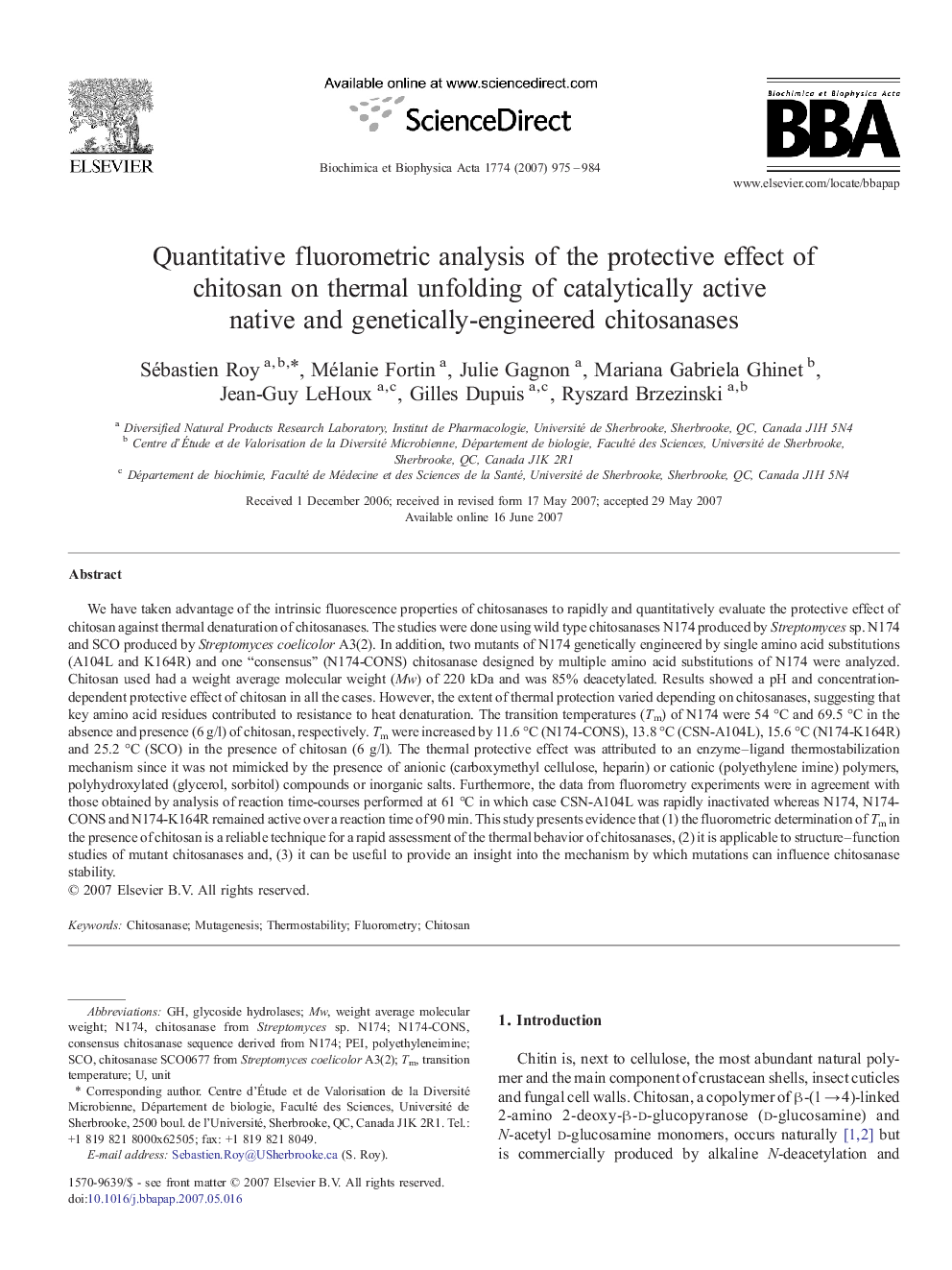| کد مقاله | کد نشریه | سال انتشار | مقاله انگلیسی | نسخه تمام متن |
|---|---|---|---|---|
| 1178334 | 962684 | 2007 | 10 صفحه PDF | دانلود رایگان |

We have taken advantage of the intrinsic fluorescence properties of chitosanases to rapidly and quantitatively evaluate the protective effect of chitosan against thermal denaturation of chitosanases. The studies were done using wild type chitosanases N174 produced by Streptomyces sp. N174 and SCO produced by Streptomyces coelicolor A3(2). In addition, two mutants of N174 genetically engineered by single amino acid substitutions (A104L and K164R) and one “consensus” (N174-CONS) chitosanase designed by multiple amino acid substitutions of N174 were analyzed. Chitosan used had a weight average molecular weight (Mw) of 220 kDa and was 85% deacetylated. Results showed a pH and concentration-dependent protective effect of chitosan in all the cases. However, the extent of thermal protection varied depending on chitosanases, suggesting that key amino acid residues contributed to resistance to heat denaturation. The transition temperatures (Tm) of N174 were 54 °C and 69.5 °C in the absence and presence (6 g/l) of chitosan, respectively. Tm were increased by 11.6 °C (N174-CONS), 13.8 °C (CSN-A104L), 15.6 °C (N174-K164R) and 25.2 °C (SCO) in the presence of chitosan (6 g/l). The thermal protective effect was attributed to an enzyme–ligand thermostabilization mechanism since it was not mimicked by the presence of anionic (carboxymethyl cellulose, heparin) or cationic (polyethylene imine) polymers, polyhydroxylated (glycerol, sorbitol) compounds or inorganic salts. Furthermore, the data from fluorometry experiments were in agreement with those obtained by analysis of reaction time-courses performed at 61 °C in which case CSN-A104L was rapidly inactivated whereas N174, N174-CONS and N174-K164R remained active over a reaction time of 90 min. This study presents evidence that (1) the fluorometric determination of Tm in the presence of chitosan is a reliable technique for a rapid assessment of the thermal behavior of chitosanases, (2) it is applicable to structure–function studies of mutant chitosanases and, (3) it can be useful to provide an insight into the mechanism by which mutations can influence chitosanase stability.
Journal: Biochimica et Biophysica Acta (BBA) - Proteins and Proteomics - Volume 1774, Issue 8, August 2007, Pages 975–984